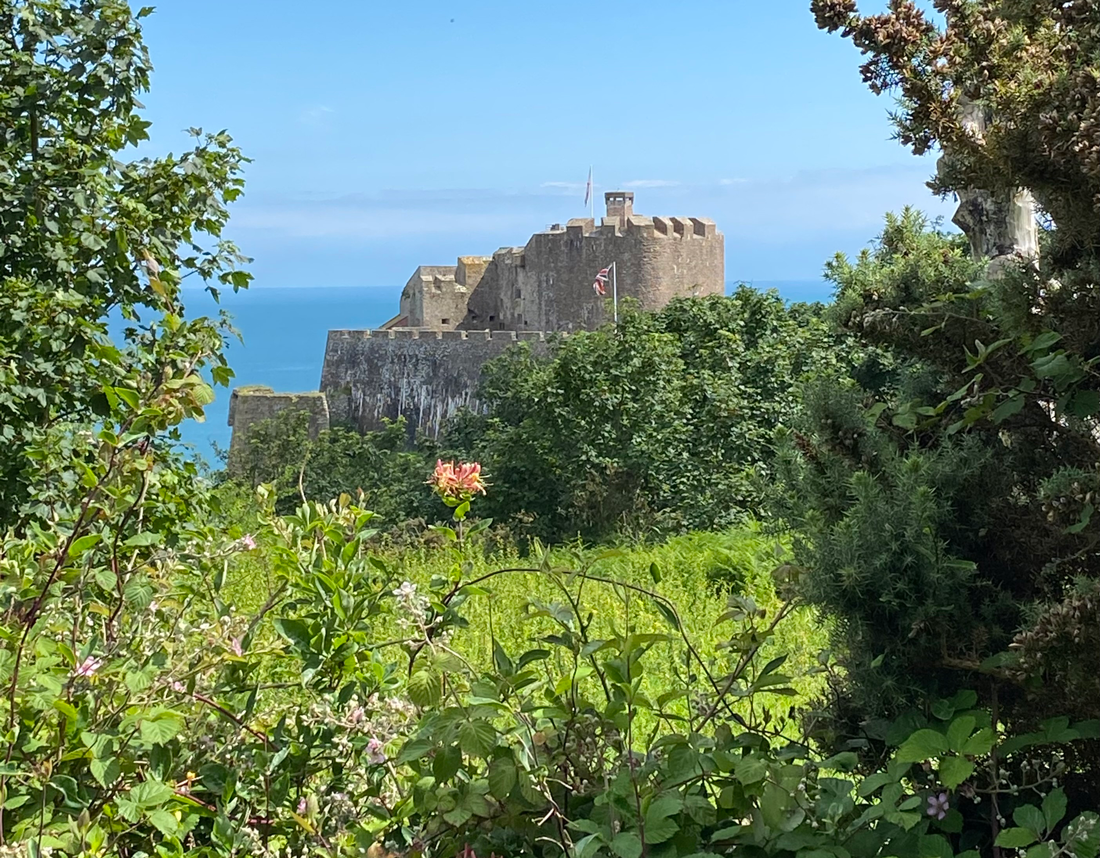
Just before HM Queen Elizabeth’s Platinum Jubilee I found myself in Jersey. The town of St Helier and the Parishes around the Island were swagged abundantly with celebratory Jubilee bunting, Jersey flags and Union Jacks. The whole island looked like a scene from a painting.
Jersey is the largest of the Channel Islands. The Islands have always held a strategic importance to the British Crown thanks to their geographical position just off the coast of France.
The English crown’s claim to be the rightful Duke of Normandy was not given up until the Treaty of Paris in 1259 when the King of France also gave up his claim upon the Channel Islands. In Jersey the loyal toast is traditionally to the “The Queen our Duke!”
Over the centuries these independent Island States, with their own parliaments, have remained loyal to the British Crown.
For over a century, we’ve flocked to the coast in search of sun, sand and sea. Jersey provided an exotic destination – at once familiar and abroad.
By the end of the 1930s some 15 million British people were holidaying by the sea.

The railway companies were keen to attract customers by promoting leisure travel and seaside posters where often produced by those whose trains served the holiday resorts. The early posters were sometimes reproductions of paintings, but poster design soon evolved under the influence of professional artists, art directors, and designers like Leonard Richmond (1889-1965). Born in Somerset he spent a large part of his career in Canada before making London his home. He was most noted for his railway posters but was also as an author and an illustrator. In the 1930s he established a summer painting school at St Ives in Cornwall.
Richmond’s poster for Southern Railway and the Great Western Railway with its joyful palette and graphic qualities advertises Jersey as a destination for Sunshine, Sands and Scenery. It sold at Toovey’s in a specialist print sale for £1100. Published by Waterlow & Sons in the 1930s it promotes an idyllic image of a beach holiday. The bay is Anne Port, one of my wife and I’s favourites on the island. It is hard to imagine that until Jersey airport opened in 1937 with its four grass runways scheduled flights landed on the beach at St Aubins and West Park, the ticket office was a bus!
Jersey is still familiar and yet abroad – a special place for a holiday.